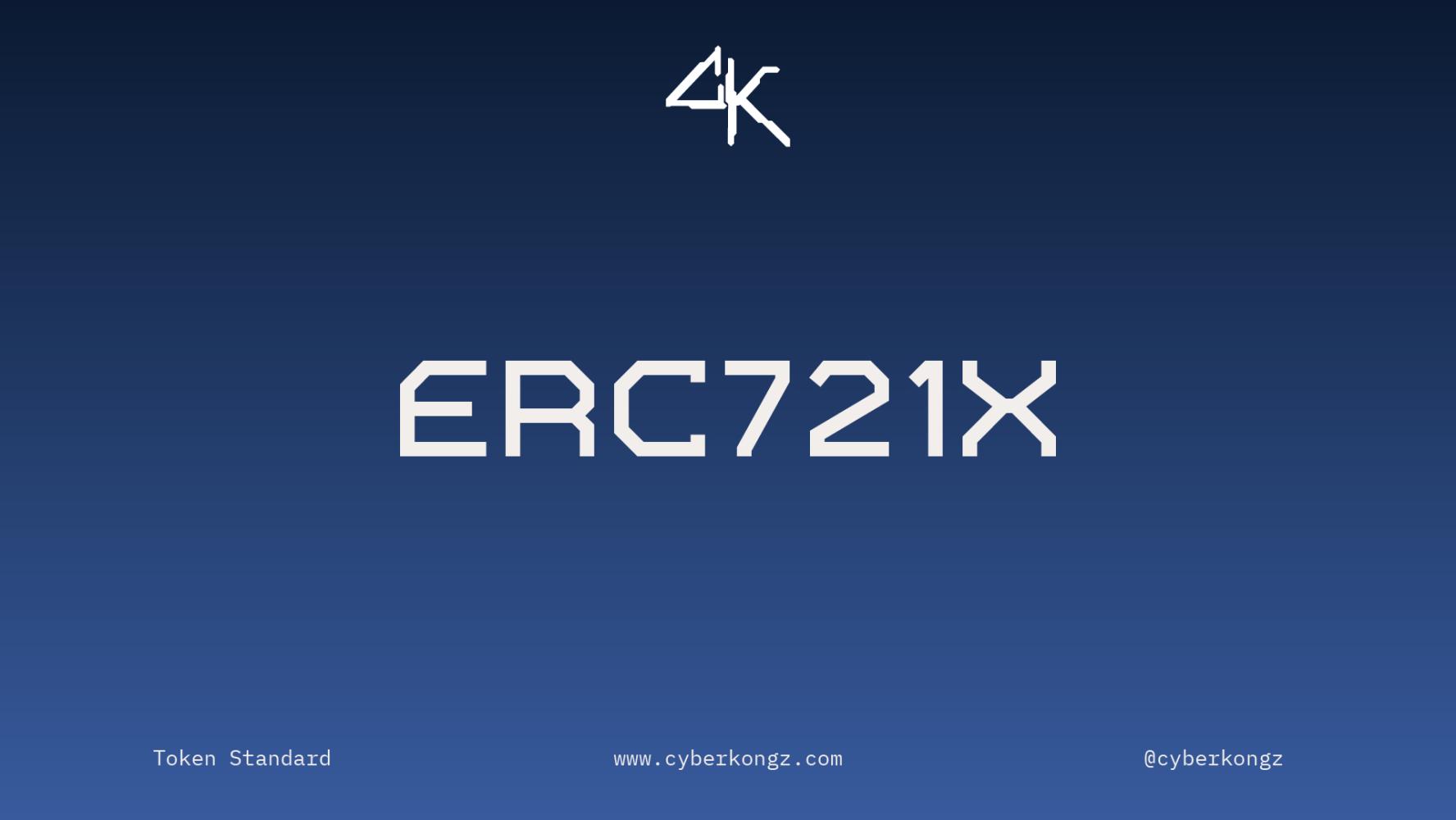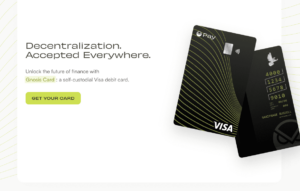
With the rise of scams and vulnerabilities, there is a need for enhanced protection mechanisms to safeguard users’ valuable digital assets. In response to this challenge, OwlofMoistness, the lead Solidity developer at CyberKongz, has introduced ERC721x, a safer implementation of the popular ERC721 standard. This blog post delves into the features and benefits of ERC721x, shedding light on its revolutionary approach to NFT security.
Protecting Your NFTs with On-Chain 2FA
The ERC721x standard offers multiple layers of security, providing NFT holders with peace of mind. One key feature is the implementation of on-chain 2-Factor Authentication (2FA) for NFTs. By designating a second wallet as a “Guardian,” users can prevent unauthorized transfers of their precious assets. This added layer of security ensures that only approved transactions initiated by the Guardian wallet can proceed, thwarting potential scammers and hackers.
Understanding Locking and Guarding
ERC721x comprises two fundamental layers of protection: “locking” and “guarding.” When an NFT is locked, it becomes immovable and is registered in the lock registry. This allows whitelisted addresses to lock and unlock assets efficiently. The lock registry, a lightweight system built upon the ERC721 standard, requires minimal gas consumption. The locking mechanism enables parallel staking, allowing assets to be utilized across multiple systems while remaining securely locked in place.
In the case of “guarding,” the Guardian Contract operates similarly to locking but with some adjustments. Rather than the original wallet holding the NFT (Wallet A) locking it, a second wallet (Wallet B) is designated as the Guardian. This Guardian wallet can then initiate a second locking of the assets held by Wallet A. Consequently, any transfers or approvals for the asset require the approval of the Guardian wallet, ensuring an additional layer of on-chain 2FA. It is highly recommended to use a hard or cold wallet as the Guardian wallet to maximize security.
Benefits of ERC721x
ERC721x effectively addresses the vulnerabilities associated with hot wallets, offering the convenience of such wallets while incorporating the security features of cold/hardware/multi-sig wallets. This hybrid approach allows users to safeguard their assets even if they are already stored in a hardware wallet, further protecting them from unwanted transfers or approval transactions. By implementing ERC721x, the number of hacks and scams within the NFT space can be significantly reduced, potentially saving users substantial losses in terms of NFT value.
Technical Overview of ERC721x: The ERC721x contract operates through the ILock interface, enabling the locking and unlocking of assets within contracts that implement it. The contract includes four essential mappings: approvedContract, lockCount, lockMap, and lockMapIndex. These mappings facilitate the tracking, assignment, and deletion of locks when necessary, providing a streamlined and efficient system for managing locked assets.
As the CyberKongz Genkai mint prepares to adopt the ERC721x standard, they continue their commitment to fostering the safest community in Web3. The introduction of ERC721x represents a significant step towards bolstering security in the NFT ecosystem. It is highly encouraged for other projects in the space to embrace this standard, as demonstrated by the successful implementations by notable collections such as 9gag and Keungz. For more detailed information on the ERC721x standard and its implementation, readers can refer to Owl’s Medium and GitHub resources. Together, we can ensure the protection of valuable NFT assets and promote a secure Web3 environment.
Introducing ERC721x: A safer implementation of the ERC721 standard ⚔️
This technology gives you the convenience of a hot wallet, with the added security of a cold wallet.https://t.co/DGwuSRrI5d pic.twitter.com/7DoNivnMwv
— CyberKongz (@CyberKongz) June 26, 2023
- SEO Powered Content & PR Distribution. Get Amplified Today.
- PlatoData.Network Vertical Generative Ai. Empower Yourself. Access Here.
- PlatoAiStream. Web3 Intelligence. Knowledge Amplified. Access Here.
- PlatoESG. Automotive / EVs, Carbon, CleanTech, Energy, Environment, Solar, Waste Management. Access Here.
- BlockOffsets. Modernizing Environmental Offset Ownership. Access Here.
- Source: https://www.nftculture.com/nft-news/enhancing-nft-security-with-erc721x-a-safer-implementation-of-the-erc721-standard/
- :has
- :is
- 2-factor Authentication
- 26
- 2FA
- a
- across
- added
- Additional
- addresses
- adjustments
- adopt
- Allowing
- allows
- already
- an
- and
- any
- approach
- approval
- approvals
- approved
- ARE
- Art
- AS
- asset
- Assets
- associated
- At
- Authentication
- BE
- becomes
- benefits
- blockchain
- Blog
- built
- but
- by
- CAN
- case
- challenge
- cold
- cold wallet
- collections
- commitment
- community
- comprises
- Consequently
- consumption
- continue
- contract
- contracts
- convenience
- crypto
- Crypto Art
- Culture
- CyberKongz
- demonstrated
- designated
- detailed
- Developer
- digital
- Digital Assets
- ecosystem
- effectively
- efficient
- efficiently
- embrace
- enables
- enabling
- encouraged
- enhanced
- enhancing
- ensure
- ensures
- ensuring
- Environment
- ERC721
- essential
- Even
- facilitate
- Feature
- Features
- For
- fostering
- four
- from
- fundamental
- further
- GAS
- GitHub
- gives
- guardian
- hackers
- hacks
- Hard
- Hardware
- Hardware Wallet
- Held
- highly
- holders
- holding
- HOT
- Hot wallet
- HTTPS
- Hybrid
- if
- implement
- implementation
- implementing
- in
- includes
- incorporating
- information
- initiate
- initiated
- Interface
- into
- introduced
- Introduction
- IT
- ITS
- Key
- layer
- layers
- lead
- light
- lightweight
- locked
- Locks
- losses
- managing
- Maximize
- mechanism
- mechanisms
- medium
- mind
- minimal
- mint
- more
- multiple
- necessary
- Need
- news
- NFT
- NFT Assets
- NFT holders
- nft news
- NFT space
- NFTs
- notable
- number
- of
- offering
- Offers
- on
- On-Chain
- ONE
- only
- operates
- or
- original
- Other
- overview
- Parallel
- peace
- Place
- plato
- Plato AiStream
- Plato Data Intelligence
- PlatoAiCast
- PlatoData
- Popular
- Post
- potential
- potentially
- Precious
- Prepares
- prevent
- projects
- promote
- protecting
- protection
- providing
- rather
- readers
- recommended
- Reduced
- registered
- registry
- remaining
- represents
- require
- requires
- Resources
- response
- revolutionary
- Rise
- safer
- safest
- saving
- Scammers
- scams
- Second
- secure
- securely
- security
- significant
- significantly
- Similarly
- solidity
- Solidity Developer
- some
- Space
- Staking
- standard
- Step
- stored
- streamlined
- substantial
- successful
- such
- system
- Systems
- Technology
- terms
- than
- that
- The
- The Guardian
- their
- Them
- then
- There.
- These
- they
- this
- Through
- to
- together
- towards
- Tracking
- Transactions
- transfers
- true
- two
- unlock
- unlocking
- unwanted
- upon
- use
- users
- utilized
- Valuable
- value
- Vulnerabilities
- Wallet
- Wallets
- we
- Web3
- when
- while
- with
- within
- you
- Your












